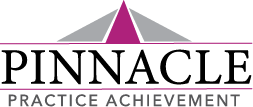Physician Burnout: Part II
Physician Burnout: Part II
In a previous article, I discussed a multitude of factors contributing to “Physician Burnout” and posed questions that may have caused readers to make unsavory discoveries regarding the financial health of their practices. Those who did more than just skim through the paragraphs relayed a sense of burnout simply from seeing the current realities of practicing medicine in black and white. For this, I apologize and offer the following content as the first in a series of articles with a greater focus on coping strategies and practical solutions to combat the challenges faced by physicians.
Think about your average day. How many tasks are you performing that are “below your pay grade?” What about your office manager or experienced team members, are you or they spending hours each week on tedious (not difficult) “to do’s” that could be delegated to someone else? I would wager the answer to be yes to both and suggest starting a “tedious chore list” and asking your managers and seasoned staff members to do the same.
Once you have determined the tasks that could (or you would like) to be delegated, instruction manuals/protocols for how to perform each must be created. These step-by-step guides should be as detailed, yet easy to follow as possible, leaving little room for misinterpretation. Including screenshots and pictures alongside clear verbiage works best as many people are visual learners. Think about the process as if you were providing a detailed blueprint for “constructing” a peanut butter and jelly sandwich assuming that the individual tasked to make the PB&J had never seen or eaten one before. Creating these “How To’s” is not only helpful as a training tool for delegation of tasks but will serve as a saving grace when (not if) there is a short staffing issue. It also avoids having just one staff member, manager or biller who knows “how to do everything” and refuses to share with the rest of the team. That kind of power is dangerous.
If you are having trouble determining which tasks could be delegated to a less experienced team member (in the office or virtually), allow me to make some suggestions: Insurance Verification (at minimum, active coverage verification for every patient, every visit), Eligibility and Benefit Checks for all new patients and existing with new insurance plans including details of in network/out of network status, copay amount, deductible, co-insurance and other out of pocket expenses), Communication with new patients regarding expectations prior to visit one (what to bring, financial obligation according to benefit details and your practice financial policy, etc.), New patient interviews (allowing demographic, medications, allergies, medical, surgical, social and family history data to be entered prior to visit), surgical planning/scheduling, prior-authorization requests, patient portal and website messaging (appointment requests, medication refills, etc.), answering billing questions, sending statements and making collections calls, ordering of supplies, coordinating outside facility paperwork and visits. . . (the list is endless).
Stay tuned for Part III where we will take a closer look at utilizing technology to increase practice and personal productivity while decreasing stress and required “man hours.”
